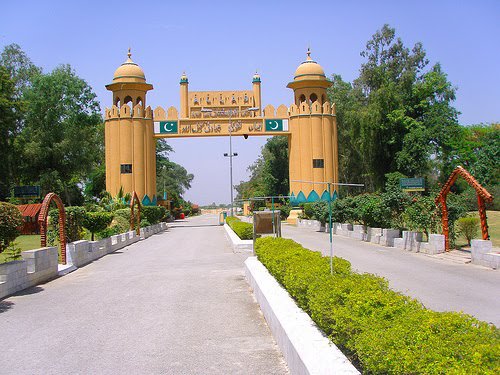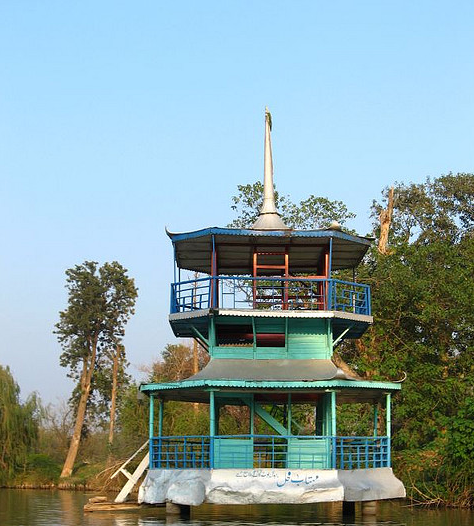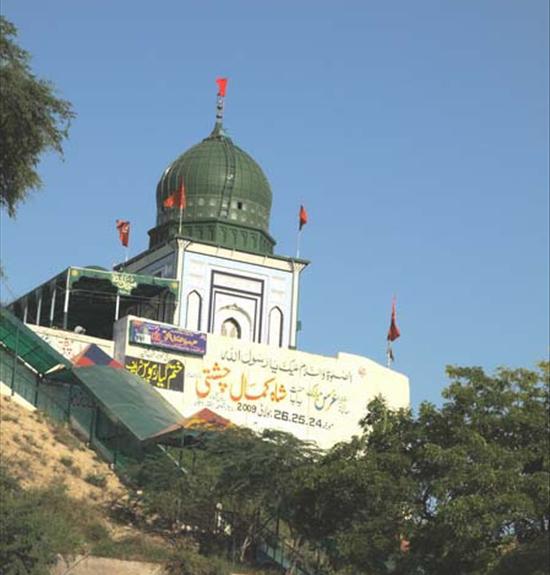|
|
|
Destinations
|
|
Places of Interest
• Ganda Singh Wala Border, Pakistan-India Border.

Ganda Singh Wala is a village in Kasur District in the West Punjab (Pakistan). The
village was named after the soldier Ganda Singh Datt (1830–1903). It lies on the
border with Eastern Punjab (India), opposite the Eastern Punjab's village of Hussainiwala,
near Firozpur. With the construction of new Lahore-Kasur road this village have
gain economic importance. It is just 45 minutes drive away from Lahore now.
The border crossing is now closed. In the 1960s and 1970s it was the principal road
crossing between India and Pakistan, but was replaced by the border crossing at
Wagah, a little further north.
In 2005 there were proposals to reopen the border, but it remained closed.
Chief Ministry Punjab Mian Muhammad Shahbaz Sharif have proposed to open this border
for trade again on his visit to Attari India. Since 1970 there has been a daily
Retreat Ceremony at the border crossing, similar to the Wagah border ceremony. The
Sutlej River flows by Ganda Singh Wala, and the area is prone to flooding.
• Changa Manga Forest, near Chunian Town.

Changa Manga is 50 miles from Lahore when travelling through the Lahore-Chunian
road. Upon reaching Changa Manga town, we needed to drive just a little further
till we contacted the relaxation houses. The forest is really a valuable treasure
worth millions. Shisham, Mulberry, Bakaian, Simbal, Caster, Frash, Berry and Eucalyptus
trees are located by the bucket load.
The Mulberry and Bakaian trees support our worldwide recognized sports industry
in Sialkot. In addition, the forest department does a large amount of work in your
area because of its 1500 employees because it provides about seven residential colonies.
This plantation also provides recyclables towards the nearby chipboard, hardboard
and match industry. Because of the thick forest, the climate from the surrounding
areas remains enjoyable having a pollution free atmosphere.
The small patches of flowers, numerous benches, five tourist sheds as well as an
aesthetic layout increase the place’s beauty. Stately built, regal restaurants make
the perfect accessory for the already peaceful atmosphere from the jungle. A suspension
bridge may be the center of attraction for going to vacationers. The superbly situated
relaxation houses on Chunian road that have three suites each are outfitted with
modern facilities with spacious, well stored grass. The bamboo sheds offer accommodation.
These may also be reserved just before your arrival there
• Mazar of Baba Bulhy Shah

Kasur past has been nurtured by Sufi Saints like Baba Bulleh Shah, Baba Kamal Chishti,Imam
Shah Bukhari, on one hand and by musicians, singers like Ustad Bade Ghulam Ali Khan,
Ustad Barkat Ali Khan, Ustad Amanat Ali Khan, Malka-e-Tarrannam Noor Jehan etc.
on the other hand.
The important cultural events in the district are the Urs of Baba Bulleh Shah and
Urs of Baba Imam Shah Bukhari as well as the Urs of Baba Sheikh Bhago.Kasur is also
known in folklore for its slippers.
A famous Punjabi folk song is :"Jutti Kasuri, Paire na puri, hai rabba ve sahnu
turna paya." Spices, salts and Ghee (butter oil) are added to them for flavor
and taste. The chief meals are taken just before mid-day and in the evening before
sun set but city folks generally have three meals.
Food: The staple food of the area is wheat, rice and pulses.
Bulleh Shah’s writings represent him as a humanist, someone providing solutions
to the sociological problems of the world around him as he lives through it, describing
the turbulence his motherland of Punjab is passing through, while concurrently searching
for God.
His poetry highlights his mystical spiritual voyage through the four stages of Sufism:
Shariat (Path), Tariqat (Observance), Haqiqat (Truth) and Marfat (Union).
The simplicity with which Bulleh Shah has been able to address the complex fundamental
issues of life and humanity is a large part of his appeal. Thus, many people have
put his kafis to music, from humble street-singers to renowned Sufi singers like
the Waddali Brothers, Sain Zahoor, Abida Parveen and Pathanay Khan, from the synthesized
techno qawwali remixes of UK-based Asian artists to the rock band Junoon.
• Mazar of Baba Kamal Chishti.

Saints are the one who try to become one with their Lord by the help of meditation
and by working on purifying their inner self this helps them understand phenomenon
which are out of the grasp of and average human being. Among these saints, Hazrat
Baba Kamal Chisti is a prominent figure.
As the name suggests he belonged to the Chisti order of Saints. This order was formed
in Chisht; it is a small settlement near Herat in Afghanistan. This order is known
for its emphasis on spreading love, tolerance and broadmindedness to the inhabitants
of this world. The teachings, this order preach can be linked all the way back to
Hazrat Ali (R.A.) and from him to our beloved Prophet Hazrat Mohammad (S.A.W.).
These people are considered the most noble and mystic people of their era.
The early life of Hazrat Kamal Chisti is absent from almost all the history books,
although some traces can still be found in some books. Ambiguity prevails as the
debate about his birth place continues.
Some say that Baba Kamal Chisti was born in a small area near Ferozpur while others
say that he was born in Kasur, hence Kasuri is appended to his name. Despite his
birthplace what is known about him is that he preached Allah’s message to people
while emphasizing on the Islamic aspects of affection, ingenuousness and forbearance.
Due to the authenticity and how these teachings turned around their lives, many
devoted followers still visit his shrine for the three day Urs held in his memory.
His shrine is located near the Kasur Museum. It stands on top of an embankment,
hence the legend that a great flood destroyed the city once leaving behind only
the shrine of Hazrat Kamal Chisti.
People from all over the country visit his shrine in hundreds, daily. And at the
occasion of Urs, devoted followers from all over the world flood in to pay reverence
to this prodigious saint. Throughout the program people are entertained with Qawali,
Chadar poshi is held to decorate his tomb with dhamal. Among the most popular of
Qawali “Ali dum dum” is known to everyone. People from different areas set up stalls
to provide the visitors with food and they distribute milk amongst the poor.
|
|